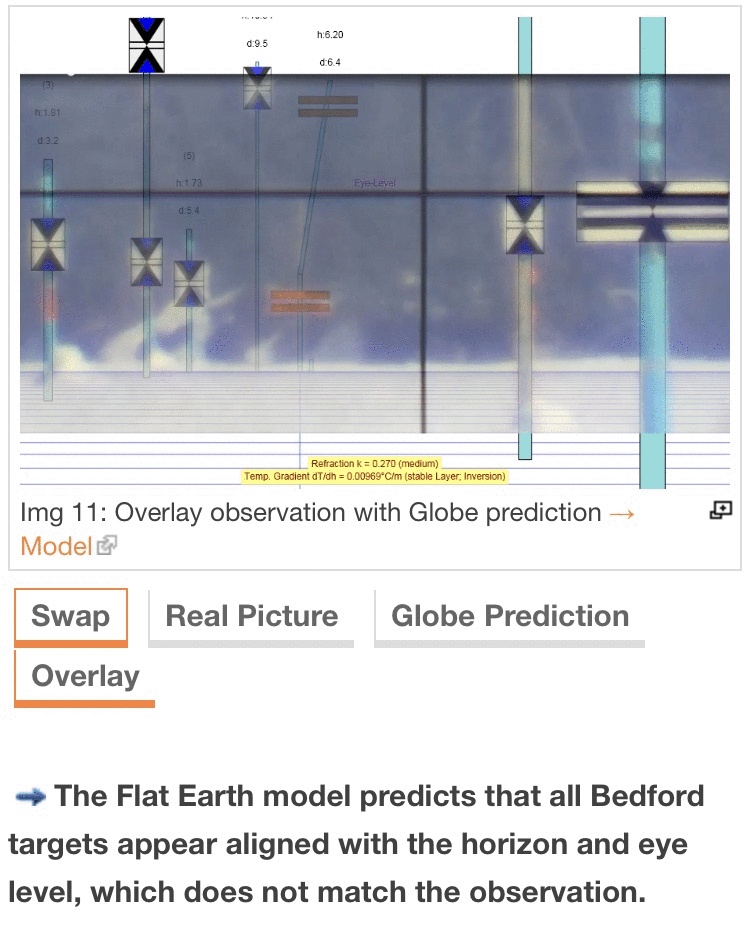It looks like you're using an Ad Blocker.
Please white-list or disable AboveTopSecret.com in your ad-blocking tool.
Thank you.
Some features of ATS will be disabled while you continue to use an ad-blocker.
share:
a reply to: CrazyFox
Sorry its the only appropriate word for anyone who believes the world is flat...
i don't even find it an insult its just true... FEers are morons demonstrably
IF you're not one thank god... IF you are its a shame but its the right word
I'll leave the argument to people with more patience for stupidity then i have
Sorry its the only appropriate word for anyone who believes the world is flat...
i don't even find it an insult its just true... FEers are morons demonstrably
IF you're not one thank god... IF you are its a shame but its the right word
I'll leave the argument to people with more patience for stupidity then i have
edit on 4-2-2022 by Akragon because: (no reason given)
a reply to: CrazyFox
Stop changing the subject..
Do you understand debate?
You posted something about celestial navigation.
I posted with proof if the earth was flat the North Star should be seen from all points on earth. Right angle geometry doesn’t lie,
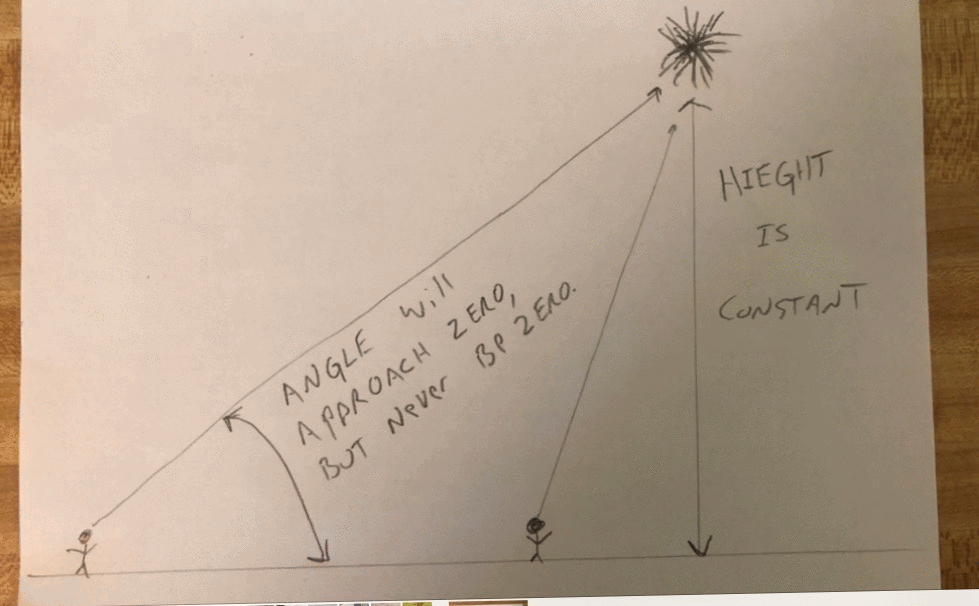
But. Because the North Star is blocked from view by the curvature of the earth in the Southern Hemisphere, one. Kills your claims about celestial navigation. Two. Shows the earth is spherical.
Then I posted two pictures below to support the demonstrable proof from my own experience the earth is not flat in agreement with the actual topic of this thread.


The way the clouds are illuminated from the bottom, and the way the clouds are least laminate at the top of the photo to more illuminated at the bottom, would be impossible on a flat earth with the sun always being above the earth / clouds.
This is where you address what is actually posted. Not change the subject. But you change the subject.
Sad you have no real argument. And you cannot come to terms I can post demonstrable proof the earth is spherical from my own efforts and experiences. Something you cannot refute. And evidently don’t have a meme for. And something you cannot do for the flat earth lie, and you can only post lying propaganda created by others.
Stop changing the subject..
Do you understand debate?
You posted something about celestial navigation.
I posted with proof if the earth was flat the North Star should be seen from all points on earth. Right angle geometry doesn’t lie,

But. Because the North Star is blocked from view by the curvature of the earth in the Southern Hemisphere, one. Kills your claims about celestial navigation. Two. Shows the earth is spherical.
Then I posted two pictures below to support the demonstrable proof from my own experience the earth is not flat in agreement with the actual topic of this thread.


The way the clouds are illuminated from the bottom, and the way the clouds are least laminate at the top of the photo to more illuminated at the bottom, would be impossible on a flat earth with the sun always being above the earth / clouds.
This is where you address what is actually posted. Not change the subject. But you change the subject.
Sad you have no real argument. And you cannot come to terms I can post demonstrable proof the earth is spherical from my own efforts and experiences. Something you cannot refute. And evidently don’t have a meme for. And something you cannot do for the flat earth lie, and you can only post lying propaganda created by others.
a reply to: CrazyFox
Oh great, pointlless idiotic meme spam. Snappy catchphrases that really don't stand up to any kind of close scrutiny.
Take the one about the images of Earth, for example. It contains one glaring error that just shows how ignorant the person who made it is and how p*ss poor their grasp of the topic is. Can you guess what it is? Here's a clue,
Oh great, pointlless idiotic meme spam. Snappy catchphrases that really don't stand up to any kind of close scrutiny.
Take the one about the images of Earth, for example. It contains one glaring error that just shows how ignorant the person who made it is and how p*ss poor their grasp of the topic is. Can you guess what it is? Here's a clue,
edit on 4/2/2022 by OneBigMonkeyToo because: (no reason given)
originally posted by: neutronflux
If you watch the entire video, m.youtube.com...
The ship becomes completely blocked physically from view by the earths curvature. It doesn’t bob in and out of view from riding the waves.
The tides last for hours, they do not bob. The bulge caused by the high tides would cause an object to be hidden at far distances. what initially sparked my curiosity was being able to see distant islands in southeast asia that shouldn't be allowed if the earth was curved. Surely enough it depended on the tides whether I could see these far distances or not, so I looked for laser level tests done on lakes.
The longest laser level experiments on a lake that i found was 8 miles away, with multiple light sources. There should be 20 ft of curvature, but the lights were clearly visible.
Like the North Star doesn’t dim as one travels farther south. But the North Star becomes increasingly lower on the horizon. Then travel far enough south below the equator, the North Star becomes physically blocked from view by the earth’s curvature. The Star didn’t dim out of view. A telescope cannot bring it back into view because it is physically blocked from view by the earth’s curvature. Which is impossible on a flat earth.
The viewing angle on flat earth would never go to zero. It’s mathematically impossible. Much so more for the sun going below the horizon. Night fall is literally the curvature of the earth casting a shadow.
As I said before, I think the spherical attributes, such as earths coordinate system and the celestial coordinate system, come from a curvature of spacetime, rather than 3-dimensional space being curved. This difference is known as intrinsic or extrinsic curve.
Objects that are the same height but further away will appear shorter. They're mistaking this effect as curvature.
Campanella devises an experiment involving three posts of the same height and a high-powered laser. The idea is to set up three measuring posts over a nearly 4 mile length of equal elevation. Once the laser is activated at the first post, its height can be measured at the other two. If the laser is at eight feet on the first post, then five feet at the second, then it indicates the measuring posts are set upon the Earth's curvature.
In his first attempt, Campanella's laser light spread out too much over the distance, making an accurate measurement impossible. But at the very end of Behind the Curve, Campanella comes up with a similar experiment, this time involving a light instead of a laser. With two holes cut into styrofoam sheets at the same height, Campanella hopes to demonstrate that a light shone through the first hole will appear on a camera behind the second hole, indicating that a light, set at the same height as the holes, travelled straight across the surface of the Flat Earth. But if the light needs to be raised to a different height than the holes, it would indicate a curvature, invalidating the Flat Earth.
Campanella watches when the light is activated at the same height as the holes, but the light can't be seen on the camera screen. "Lift up your light, way above your head," Campanella says. With the compensation made for the curvature of the Earth, the light immediately appears on the camera. "Interesting," Campanella says. "That's interesting." The documentary ends.
I don't have time to watch a whole documentary, but did they make sure the light source post was plum (perfectly perpendicular to the ground)?
The laser level on a frozen lake is the golden standard, it's simple and easily reproducible. Same with long distance photography that is constantly defying intrinsic curvature. This is why I think the curvature is extrinsic
edit on 4-2-2022 by cooperton because: (no reason given)
a reply to: cooperton
Good gosh.
I was in the Navy. The navy maintains tactical competence, able to get on station as fast as possible and on scheduled, and maintains fuel efficiency by treating the earth like the spherical shape it is.
But you want to do this the hard way.
First the cargo ship being physically blocked from view by the earths curvature.
You
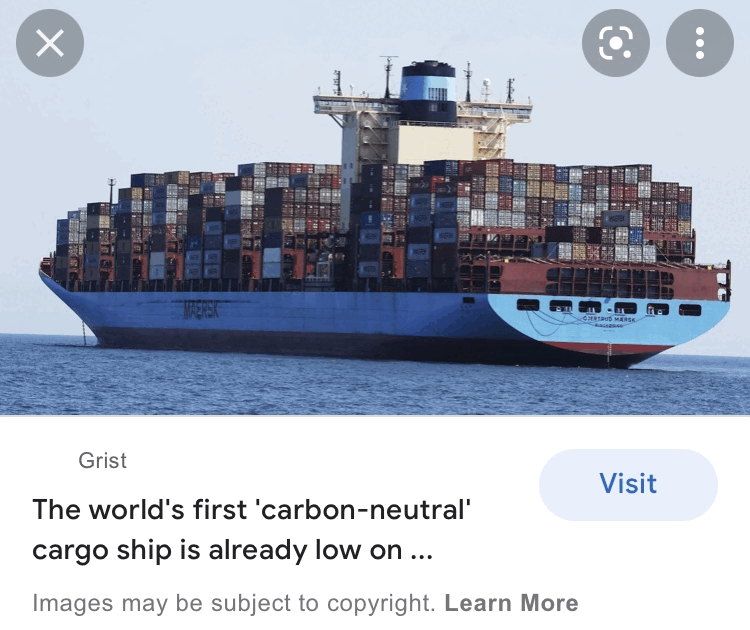
Let’s fail conservatively. Each container is about 6 feet in height. The ship pictured looks like the water line to the deck is 3 containers tall. About 18 feet to the water line to the deck. We’ll fail conservative again. The containers on the deck are stacked three high. Dismissing that the containers are actually stacked about 6 containers high, and ignoring the rather tall control bridge. For this example, the ship is 36 feet above the water line. Ultra conservative failing.
Now. What is the hight of tides, ignoring the ship and beach are essentially in the same tide phase due to the ship being close to the coast.
The ship is very much taller above the water line than the typical 2 feet of tide.
And dollars to donut the height of the ship above the water line is greater than the highest of tides at 54 feet. Which would be 9 six foot tall containers.
So. No, the tides are not “hiding” the ship in the below video. Which would be impossible in the flat earth delusion. The tides, and then the ship being physically blocked from view. So. You tried to use tides that would be impossible in the flat earth delusion no gravity to explain another item impossible on the flat earth. What a F’n joke.
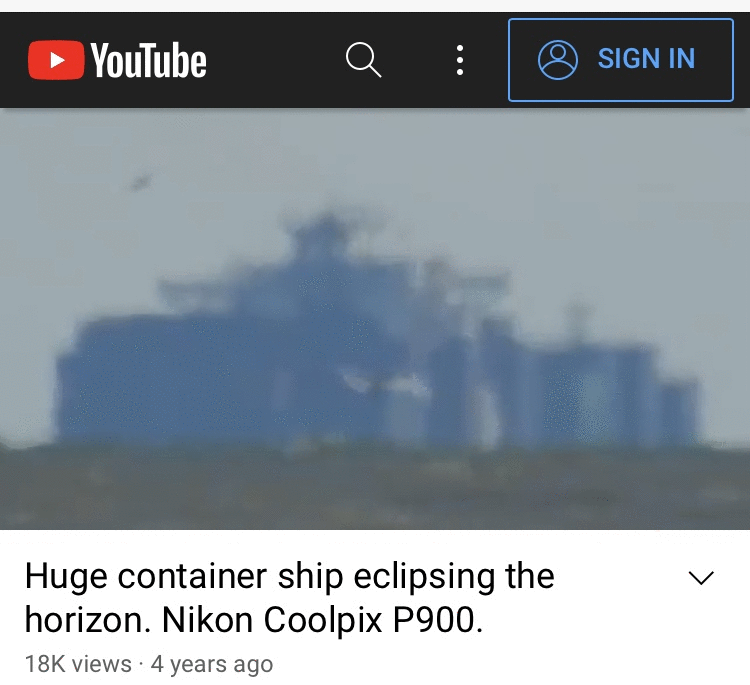
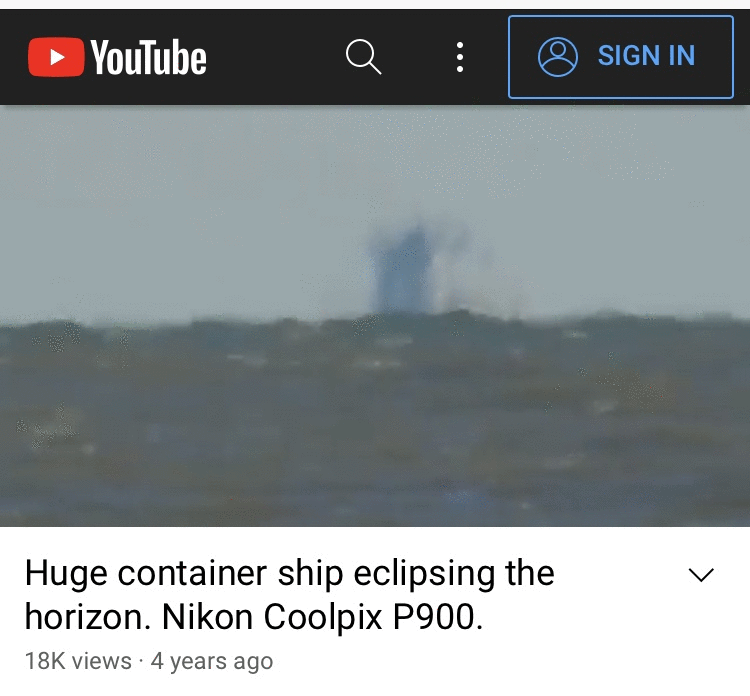
m.youtube.com...
So. The flat earth model has again failed to predict and explain what is witnessed. And you tried to use another item like tides not explained / possible in the flat earth model.
Good gosh.
I was in the Navy. The navy maintains tactical competence, able to get on station as fast as possible and on scheduled, and maintains fuel efficiency by treating the earth like the spherical shape it is.
But you want to do this the hard way.
First the cargo ship being physically blocked from view by the earths curvature.
You
The tides last for hours, they do not bob. The bulge caused by the high tides would cause an object to be hidden at far distances.

Let’s fail conservatively. Each container is about 6 feet in height. The ship pictured looks like the water line to the deck is 3 containers tall. About 18 feet to the water line to the deck. We’ll fail conservative again. The containers on the deck are stacked three high. Dismissing that the containers are actually stacked about 6 containers high, and ignoring the rather tall control bridge. For this example, the ship is 36 feet above the water line. Ultra conservative failing.
Now. What is the hight of tides, ignoring the ship and beach are essentially in the same tide phase due to the ship being close to the coast.
The typical tidal range in the open ocean is about 0.6 metres (2 feet) (blue and green on the map on the right). Closer to the coast, this range is much greater. Coastal tidal ranges vary globally and can differ anywhere from near zero to over 16 m (52 ft).[3] The exact range depends on the volume of water adjacent to the coast, and the geography of the basin the water sits in. Larger bodies of water have higher ranges, and the geography can act as a funnel amplifying or dispersing the tide.[4] The world's largest tidal range of 16.3 metres (53.5 feet) occurs in Bay of Fundy, Canada,[3][5] a similar range is experienced at Ungava Bay also in Canada[6] and the United Kingdom regularly experiences tidal ranges up to 15 metres (49 feet) between England and Wales in the Bristol Channel.[7]
en.m.wikipedia.org...
The ship is very much taller above the water line than the typical 2 feet of tide.
And dollars to donut the height of the ship above the water line is greater than the highest of tides at 54 feet. Which would be 9 six foot tall containers.
So. No, the tides are not “hiding” the ship in the below video. Which would be impossible in the flat earth delusion. The tides, and then the ship being physically blocked from view. So. You tried to use tides that would be impossible in the flat earth delusion no gravity to explain another item impossible on the flat earth. What a F’n joke.


m.youtube.com...
So. The flat earth model has again failed to predict and explain what is witnessed. And you tried to use another item like tides not explained / possible in the flat earth model.
edit on 4-2-2022 by neutronflux because: Added and fixed
edit on 4-2-2022 by neutronflux because: Fixed
a reply to: cooperton
You
Let’s start here. Was the laser far enough above the ground to eliminate refraction by the atmosphere? Or did the flat earthers mention refraction and show how they eliminated refraction from the the equation. Or did they hope to dupe those that don’t understand refraction.
Again…
If you missed it, “ They usually fail to control, and even disregard, the effect of atmospheric refraction. Using Wallace’s simple method, we can easily prove Earth is a sphere.”
So…
I have two documented experiments that eliminate errors due to prospective and refraction.
Backs the flat earth experiment on
You have a flat earth experiment that is on YouTube in which they hope people don’t ask about refraction. Something flat earthers have a history of using to dupe people. Especially people that are biased towards flat earth, and buy into the delusion.
You
The longest laser level experiments on a lake that i found was 8 miles away, with multiple light sources. There should be 20 ft of curvature, but the lights were clearly visible.
Let’s start here. Was the laser far enough above the ground to eliminate refraction by the atmosphere? Or did the flat earthers mention refraction and show how they eliminated refraction from the the equation. Or did they hope to dupe those that don’t understand refraction.
Again…
The Wallace Method
flatearth.ws...
In 1870, Alfred Russel Wallace proved Earth’s curvature in the Bedford level experiment. His method was straightforward & effective and can be easily used in a similar experiment.
Wallace’s method fixes the common issues with similar experiments done by flat-Earthers. They usually fail to control, and even disregard, the effect of atmospheric refraction. Using Wallace’s simple method, we can easily prove Earth is a sphere.
If you missed it, “ They usually fail to control, and even disregard, the effect of atmospheric refraction. Using Wallace’s simple method, we can easily prove Earth is a sphere.”
So…
I have two documented experiments that eliminate errors due to prospective and refraction.
The Rainy Lake Experiment
Saturday, July 20, 2019 - 00:50 | Author: wabis | Topics: FlatEarth, Knowlegde, Science, Experiment
walter.bislins.ch...
Backs the flat earth experiment on
Behind the Curve' Ending: Flat Earthers Disprove Themselves With Own Experiments in Netflix Documentary
BY ANDREW WHALEN ON 2/25/19 AT 5:04 PM EST
www.newsweek.com...
Campanella devises an experiment involving three posts of the same height and a high-powered laser. The idea is to set up three measuring posts over a nearly 4 mile length of equal elevation. Once the laser is activated at the first post, its height can be measured at the other two. If the laser is at eight feet on the first post, then five feet at the second, then it indicates the measuring posts are set upon the Earth's curvature.
In his first attempt, Campanella's laser light spread out too much over the distance, making an accurate measurement impossible. But at the very end of Behind the Curve, Campanella comes up with a similar experiment, this time involving a light instead of a laser. With two holes cut into styrofoam sheets at the same height, Campanella hopes to demonstrate that a light shone through the first hole will appear on a camera behind the second hole, indicating that a light, set at the same height as the holes, travelled straight across the surface of the Flat Earth. But if the light needs to be raised to a different height than the holes, it would indicate a curvature, invalidating the Flat Earth.
Campanella watches when the light is activated at the same height as the holes, but the light can't be seen on the camera screen. "Lift up your light, way above your head," Campanella says. With the compensation made for the curvature of the Earth, the light immediately appears on the camera. "Interesting," Campanella says. "That's interesting." The documentary ends.
You have a flat earth experiment that is on YouTube in which they hope people don’t ask about refraction. Something flat earthers have a history of using to dupe people. Especially people that are biased towards flat earth, and buy into the delusion.
a reply to: cooperton
You
One. Doesn’t space time require gravity which isn’t part of the flat earth delusion.
Something like this,

Explains why the flat earth model is impossible. And you still have no explanation why.
One. The curvature of the earth can be calculated by observation.
Two, Doesn’t explain the failing of what the flat earth delusionalist adopted for their map in navigation.
Again. This arrow out of South America doesn’t get you to Antarctica
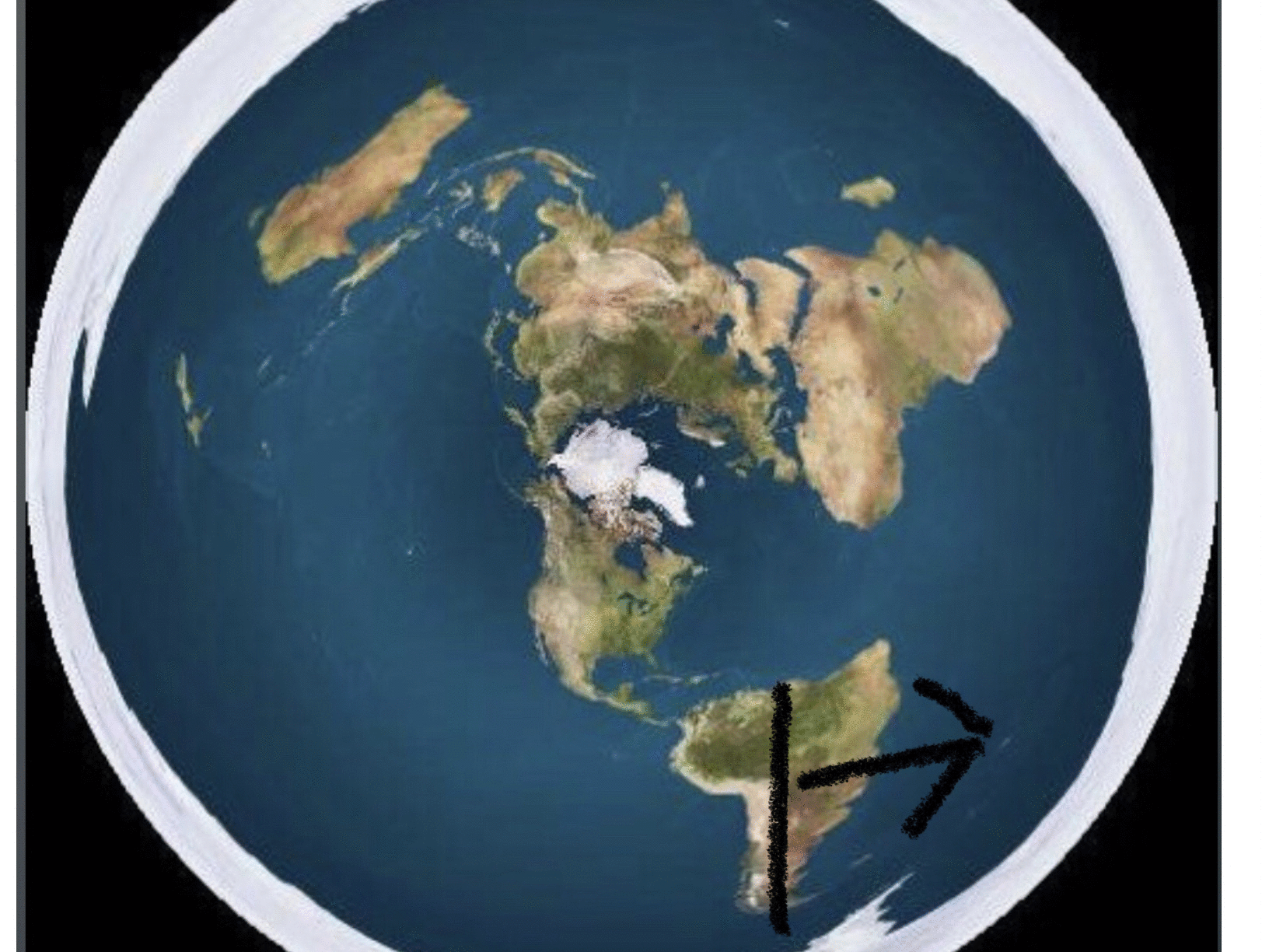
The direction of relative travel takes you to Africa
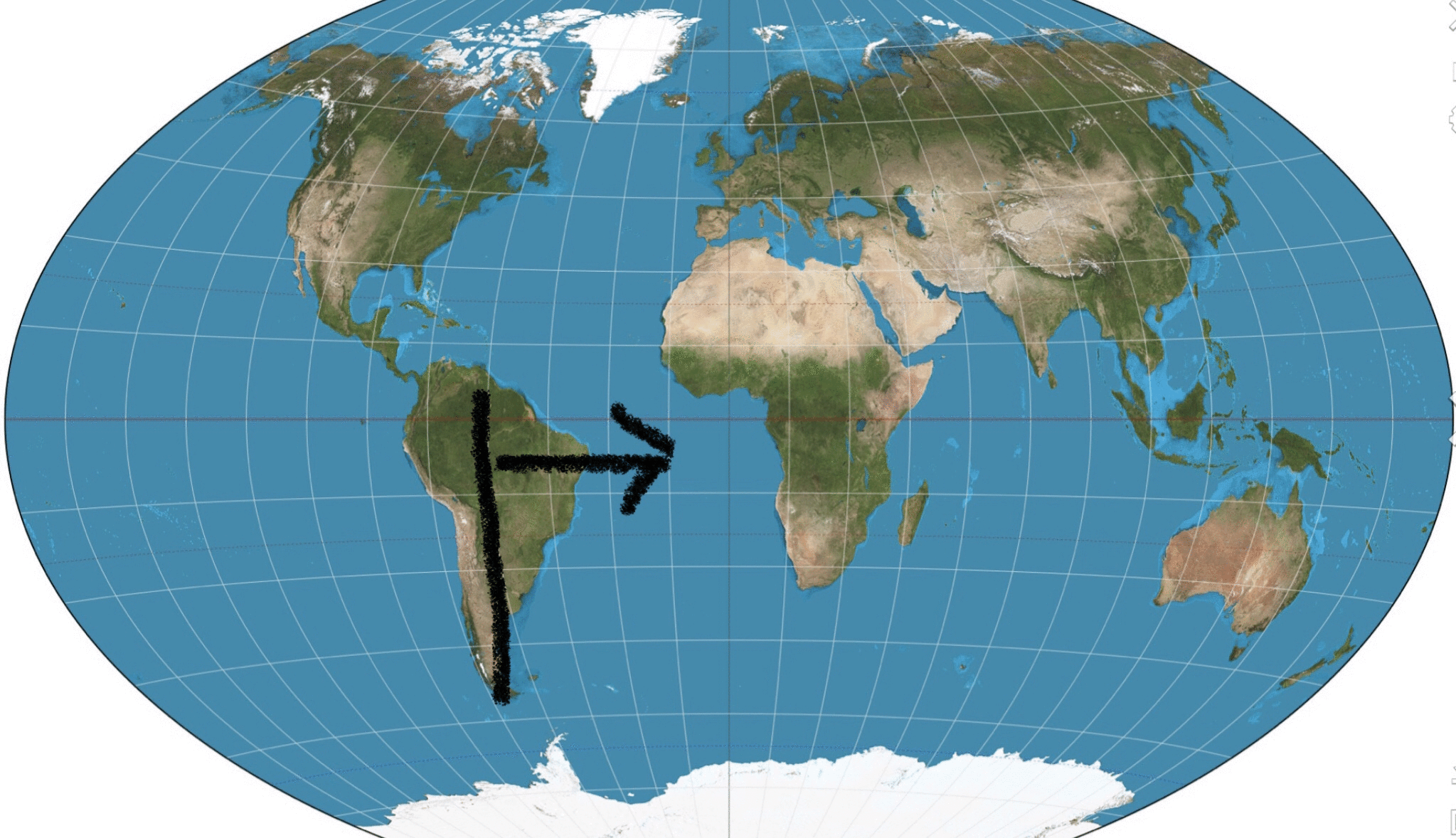
Three. Doesn’t explain the need for various map projections.
Four. Doesn’t explain why a glob is the most accurate way to depict distance and relative positions on the earth.
Five. Doesn’t explain things like why the North Star is physically blocked from view in the Southern Hemisphere. And that night fall is literally the shadow of the earths curvature. And in the flat earth delusion, the sun would never set and be always visible from all the points of the earth. The earth being spherical does.
Sorry. Flat earth is the lie.
You
As I said before, I think the spherical attributes, such as earths coordinate system and the celestial coordinate system, come from a curvature of spacetime, rather than 3-dimensional space being curved. This difference is known as intrinsic or extrinsic curve.
One. Doesn’t space time require gravity which isn’t part of the flat earth delusion.
Something like this,

Explains why the flat earth model is impossible. And you still have no explanation why.
One. The curvature of the earth can be calculated by observation.
Activity, measuring the earths curvature
www.astro.princeton.edu...
Two, Doesn’t explain the failing of what the flat earth delusionalist adopted for their map in navigation.
Again. This arrow out of South America doesn’t get you to Antarctica

The direction of relative travel takes you to Africa

Three. Doesn’t explain the need for various map projections.
7 Ways Flat Earth Conspiracy Will Make You Look Silly
newcreeations.org...
Map Projections
Anyone who has done a significant amount of practical navigation around the earth can tell you that there are different ways to represent the earth on a piece of paper, i.e. what we call maps. (There’s a difference between maps and nautical charts that ships use at sea. But that’s beyond the scope of this discussion.)
The are many different approaches to challenge representing a spherical object on a flat plane (i.e. a printed paper map) for use in a practical environment, like for shipboard navigation. The technical name for each of these approaches is called a “map projection”.
Because they represent the spherical earth in a flat plane, all map projections contain some kind of distortion.
For example, the most common map projection used was developed in 1569 by a Flemish cartographer named Gerardus Mercator and is called the “mercator projection.” This map projection is widely used in large part because it depicts compass courses as straight lines.
The mercator projection basically “projects” the spherical earth onto a cylinder and then unrolls the cylinder to lay it flat. This causes increasing distortion as one gets closer to the north and south poles along the top and bottom edges of the map when the whole earth is depicted.. With the mercator projection the shapes stay the same, but the area of the shape increases significantly towards the poles. Because of this distortion, land masses like Greenland and Antarctica appear far larger on these maps than they really are.
Even with this distortion, the mercator projection makes for an incredibly useful map.
The “azimuthal equidistant projection” is another map projection with some interesting properties. This map picks a point on the globe and then spreads the earth out from a sphere to a plane around that point creating a circular map. The distortions with this projection get bigger as the distance from the center of the circle increases. The distortions are pretty severe at the outer edges of the map circle when depicting large areas like the entire planet.
Four. Doesn’t explain why a glob is the most accurate way to depict distance and relative positions on the earth.
Five. Doesn’t explain things like why the North Star is physically blocked from view in the Southern Hemisphere. And that night fall is literally the shadow of the earths curvature. And in the flat earth delusion, the sun would never set and be always visible from all the points of the earth. The earth being spherical does.
Sorry. Flat earth is the lie.
edit on 4-2-2022 by neutronflux because: Added and fixed
a reply to: cooperton
More proof the earth is physically curved
Again. Demonstrable proof the earth is spherical.
Sorry. Flat earth is the lie.
More proof the earth is physically curved
Effect of Earth’s Curvature on Suspension Bridge Dimensions
www.mathscinotes.com...
Again. Demonstrable proof the earth is spherical.
Sorry. Flat earth is the lie.
edit on 4-2-2022 by neutronflux because: Added and fixed
originally posted by: neutronflux
a reply to: cooperton
Good gosh.
I was in the Navy. The navy maintains tactical competence, able to get on station as fast as possible and on scheduled, and maintains fuel efficiency by treating the earth like the spherical shape it is.
But it is extrinsically spherical, not intrinsically spherical. You would get the same effect with both.
Let’s fail conservatively. Each contain is about 6 feet in height. The ship pictured looks like the water line to the deck is 3 containers tall. About 18 feet to the water line to the deck. We’ll fail conservative again. The containers on the deck are stacked on three high. Dismissing that the containers are actually stacked about 6 containers high, and ignoring the rather tall control bridge. For this example, the ship is 36 feet above the water line. Ultra conservative failing.
Now. What is the hight of tides, ignoring the ship and beach are essentially in the same tide phase.
"The typical tidal range in the open ocean is about 0.6 metres (2 feet) (blue and green on the map on the right). Closer to the coast, this range is much greater. Coastal tidal ranges vary globally and can differ anywhere from near zero to over 16 m (52 ft).[3] The exact range depends on the volume of water adjacent to the coast, and the geography of the basin the water sits in. Larger bodies of water have higher ranges, and the geography can act as a funnel amplifying or dispersing the tide.[4] The world's largest tidal range of 16.3 metres (53.5 feet) occurs in Bay of Fundy, Canada,[3][5] a similar range is experienced at Ungava Bay also in Canada[6] and the United Kingdom regularly experiences tidal ranges up to 15 metres (49 feet) between England and Wales in the Bristol Channel.[7]"
en.m.wikipedia.org...
The ship is very much taller above the water line than the typical 2 feet of tide.
And dollars to donut the height of the ship above the water line is greater than the heights of tides of at feet. Which would be 9 six foot tall containers.
So. No, the tides are not “hiding” the ship in the below video.
With curvature calculations, it is actually exponential over distance, not linear. Because the tidal bulge would create a sphere-like curvature effect, it would go by a similar calculation. An object that goes further away during high tides will disappear over the bulge.
You tried to uses tides that would be impossible in the flat earth delusion no gravity to explain another item impossible on the flat earth. What a F’n joke.
originally posted by: neutronflux
Two, Doesn’t explain the failing of what the flat earth delusionalist adopted for their map in navigation.
Again. This arrow out of South America doesn’t get you to Antarctica
The direction of relative travel takes you to Africa
Three. Doesn’t explain the need for various map projections.
Strawman. I do not endorse the flat earth map. I think most of what we conventionally know is right, with the distinction that the physical 3D interface of earth is a flat hyperplane. According to Einstein's relativity theory, spacetime curves around mass, which is what is occurring with this flat hyperplane to cause it to become a 4D sphere. This accommodates The fact that lasers can be seen across distances that wouldn't be allowed with an intrinsic curve, but would be allowed with an extrinsic curve. Same with long distance photography. While also accommodating the spherical attributes such as coordinates.
edit on 4-2-2022 by cooperton because: (no reason given)
a reply to: cooperton
You
Again…
You
One. Doesn’t space time require gravity which isn’t part of the flat earth delusion.
Something like this,

Explains why the flat earth model is impossible. And you still have no explanation why.
One. The curvature of the earth can be calculated by observation.
Two, Doesn’t explain the failing of what the flat earth delusionalist adopted for their map in navigation.
Again. This arrow out of South America doesn’t get you to Antarctica

The direction of relative travel takes you to Africa

Three. Doesn’t explain the need for various map projections.
Four. Doesn’t explain why a glob is the most accurate way to depict distance and relative positions on the earth.
Five. Doesn’t explain things like why the North Star is physically blocked from view in the Southern Hemisphere. And that night fall is literally the shadow of the earths curvature. And in the flat earth delusion, the sun would never set and be always visible from all the points of the earth. The earth being spherical does.
Sorry. Flat earth is the lie.
More proof the earth is physically curved
Again. Demonstrable proof the earth is spherical.
Sorry. Flat earth is the lie.
You
But it is extrinsically spherical, not intrinsically spherical. You would get the same effect with both.
Again…
You
As I said before, I think the spherical attributes, such as earths coordinate system and the celestial coordinate system, come from a curvature of spacetime, rather than 3-dimensional space being curved. This difference is known as intrinsic or extrinsic curve.
One. Doesn’t space time require gravity which isn’t part of the flat earth delusion.
Something like this,

Explains why the flat earth model is impossible. And you still have no explanation why.
One. The curvature of the earth can be calculated by observation.
Activity, measuring the earths curvature
www.astro.princeton.edu...
Two, Doesn’t explain the failing of what the flat earth delusionalist adopted for their map in navigation.
Again. This arrow out of South America doesn’t get you to Antarctica

The direction of relative travel takes you to Africa

Three. Doesn’t explain the need for various map projections.
7 Ways Flat Earth Conspiracy Will Make You Look Silly
newcreeations.org...
Map Projections
Anyone who has done a significant amount of practical navigation around the earth can tell you that there are different ways to represent the earth on a piece of paper, i.e. what we call maps. (There’s a difference between maps and nautical charts that ships use at sea. But that’s beyond the scope of this discussion.)
The are many different approaches to challenge representing a spherical object on a flat plane (i.e. a printed paper map) for use in a practical environment, like for shipboard navigation. The technical name for each of these approaches is called a “map projection”.
Because they represent the spherical earth in a flat plane, all map projections contain some kind of distortion.
For example, the most common map projection used was developed in 1569 by a Flemish cartographer named Gerardus Mercator and is called the “mercator projection.” This map projection is widely used in large part because it depicts compass courses as straight lines.
The mercator projection basically “projects” the spherical earth onto a cylinder and then unrolls the cylinder to lay it flat. This causes increasing distortion as one gets closer to the north and south poles along the top and bottom edges of the map when the whole earth is depicted.. With the mercator projection the shapes stay the same, but the area of the shape increases significantly towards the poles. Because of this distortion, land masses like Greenland and Antarctica appear far larger on these maps than they really are.
Even with this distortion, the mercator projection makes for an incredibly useful map.
The “azimuthal equidistant projection” is another map projection with some interesting properties. This map picks a point on the globe and then spreads the earth out from a sphere to a plane around that point creating a circular map. The distortions with this projection get bigger as the distance from the center of the circle increases. The distortions are pretty severe at the outer edges of the map circle when depicting large areas like the entire planet.
Four. Doesn’t explain why a glob is the most accurate way to depict distance and relative positions on the earth.
Five. Doesn’t explain things like why the North Star is physically blocked from view in the Southern Hemisphere. And that night fall is literally the shadow of the earths curvature. And in the flat earth delusion, the sun would never set and be always visible from all the points of the earth. The earth being spherical does.
Sorry. Flat earth is the lie.
More proof the earth is physically curved
Effect of Earth’s Curvature on Suspension Bridge Dimensions
www.mathscinotes.com...
Again. Demonstrable proof the earth is spherical.
Sorry. Flat earth is the lie.
a reply to: cooperton
You
It’s not a straw man argument. There is no advantage for treating the world as flat for navigating the world. And the earth is demonstrably physically spherical.
If you want to create your own delusion of space time. That is your right. But when it comes to reality of traveling the world, mapping the world, building suspension bridge towers, explaining why the North Star is physically blocked from view in the Southern Hemisphere, explaining that night fall is literally the showdown of the earth’s curvature, the strength of earth’s gravity at various geological locations, making weather, it’s practical and accurate to treat the earth as spherical.
Flat earth is the lie.
You
Strawman
It’s not a straw man argument. There is no advantage for treating the world as flat for navigating the world. And the earth is demonstrably physically spherical.
If you want to create your own delusion of space time. That is your right. But when it comes to reality of traveling the world, mapping the world, building suspension bridge towers, explaining why the North Star is physically blocked from view in the Southern Hemisphere, explaining that night fall is literally the showdown of the earth’s curvature, the strength of earth’s gravity at various geological locations, making weather, it’s practical and accurate to treat the earth as spherical.
Flat earth is the lie.
originally posted by: neutronflux
One. Doesn’t space time require gravity which isn’t part of the flat earth delusion.
Flat spacetime is one of the main solutions for Einstein's relativity theory. He proposed that it was the curvature of the spacetime that is causing the gravitational effect, so in this sense earth must have spacetime curvature. If the earth was intrinsically a sphere, then its extrinsic curvature would cause it to be toroidal, and you would have a passage from the north to the south pole. I have seen theories that this is the case, and may even be why the Nazi's were allegedly interested in such a channel between the north and south pole, but until proof of this is provided I am going to suppose it is not the case. I think such a scenario would screw up the coordinate system too, and not match a spherical coordinate system.
So therefore I think the spherical attributes of earth are due to the curvature of flat spacetime.
originally posted by: neutronflux
There is no advantage for treating the world as flat for navigating the world. And the earth is demonstrably physically spherical.
For all intents and purpose the earth can be simplified as a sphere. But for physics it is an important distinction to know whether it is intrinsically or extrinsically a sphere.
edit on 4-2-2022 by cooperton because: (no reason given)
a reply to: cooperton
And what does that have to do with…
If you want to create your own delusion of space time. That is your right. But when it comes to reality of traveling the world, mapping the world, building suspension bridge towers, explaining why the North Star is physically blocked from view in the Southern Hemisphere, explaining that night fall is literally the showdown of the earth’s curvature, the strength of earth’s gravity at various geological locations, making weather, it’s practical and accurate to treat the earth as spherical.
Flat earth is the lie.
If you want to do “what is fabric of reality,” your in the wrong thread.
This is “ Absolute Proof the Earth is Round NOT Flat!”
And again..
The funniest part about this thread. The flat earthers that cannot even address the opening post. And have to change the subject to flat earth lies.
My own cloud pictures from a sun set that is impossible on a flat earth.


How does a sun that is always above the flat earth delusion strongly illuminate the bottoms of clouds at sunset in my spherical earth reality
And what does that have to do with…
If you want to create your own delusion of space time. That is your right. But when it comes to reality of traveling the world, mapping the world, building suspension bridge towers, explaining why the North Star is physically blocked from view in the Southern Hemisphere, explaining that night fall is literally the showdown of the earth’s curvature, the strength of earth’s gravity at various geological locations, making weather, it’s practical and accurate to treat the earth as spherical.
Flat earth is the lie.
If you want to do “what is fabric of reality,” your in the wrong thread.
This is “ Absolute Proof the Earth is Round NOT Flat!”
And again..
The funniest part about this thread. The flat earthers that cannot even address the opening post. And have to change the subject to flat earth lies.
My own cloud pictures from a sun set that is impossible on a flat earth.


How does a sun that is always above the flat earth delusion strongly illuminate the bottoms of clouds at sunset in my spherical earth reality
originally posted by: neutronflux
a reply to: cooperton
And what does that have to do with…
If you want to create your own delusion of space time. That is your right. But when it comes to reality of traveling the world, mapping the world, building suspension bridge towers, explaining why the North Star is physically blocked from view in the Southern Hemisphere, explaining that night fall is literally the showdown of the earth’s curvature, the strength of earth’s gravity at various geological locations, making weather, it’s practical and accurate to treat the earth as spherical.
Flat earth is the lie.
I don't know how else to explain myself, but you're not getting my point. The coordinate system and travel would be the same as expected on a spherical earth due to extrinsic curvature. But the space manifold itself would intrinsically be flat.
How does a sun that is always above the flat earth delusion strongly illuminate the bottoms of clouds at sunset in my spherical earth reality
The curvature of spacetime. We weren't taught this growing up, we were taught the Newtonian space model. But the theory that is most relatable to reality is Einstein's relativity theory, and he insisted upon spacetime curvature. This would have a few differences than a regular 3D curved object, but it would still accommodate all the objections you're bringing up.
edit on 4-2-2022 by cooperton because: (no reason given)
a reply to: cooperton
It’s best to use an example.
In the context of this…
Effect of Earth’s Curvature on Suspension Bridge Dimensions
www.mathscinotes.com...
How would you use space time to make the design of a suspension bridge on a spherical earth better than current practices and codes?
It’s best to use an example.
In the context of this…
Effect of Earth’s Curvature on Suspension Bridge Dimensions
www.mathscinotes.com...
How would you use space time to make the design of a suspension bridge on a spherical earth better than current practices and codes?
edit on
4-2-2022 by neutronflux because: Added and fixed
a reply to: cooperton
Newtonian and Einsteinian models are not exclusive. I once read that Newton explains how things interact, Einstein explains why. Einstein's physics does not mean there are no spheres, it just explains why those spheres behave the way they do in relation to everything else.
Newtonian and Einsteinian models are not exclusive. I once read that Newton explains how things interact, Einstein explains why. Einstein's physics does not mean there are no spheres, it just explains why those spheres behave the way they do in relation to everything else.
originally posted by: OneBigMonkeyToo
a reply to: cooperton
Newtonian and Einsteinian models are not exclusive. I once read that Newton explains how things interact, Einstein explains why. Einstein's physics does not mean there are no spheres, it just explains why those spheres behave the way they do in relation to everything else.
Yeah Einstein's physics does not necessarily say there are no intrinsic spheres, but it does say there is the possibility that spheres are extrinsic. This distinction might actually be able to solve some broader discrepancies with the intrinsic sphere assumptions. I'd love to corroborate with others and discuss, especially given some sort of computer engineering experience to be able to model what this distinction would imply. Also anyone who is experienced with Einstein's field equations.
originally posted by: neutronflux
a reply to: cooperton
It’s best to use an example.
In the context of this…
Effect of Earth’s Curvature on Suspension Bridge Dimensions
www.mathscinotes.com...
How would you use space time to make the design of a suspension bridge on a spherical earth better than current practices and codes?
I couldn't find any sources that refer to actual engineers who build bridges. That guy in your link admits he does not. I've found assumptions both ways, either saying no you don't or yes you do without concrete evidence to support either.
This is why I think the laser level experiments on frozen lakes are the most simple examples that don't involve speculation. Same with long distance photography
edit on 4-2-2022 by cooperton because: (no reason given)
Again
Again with the wall of verbiage, lol. You always do that. Walls and walls of creationist bollocks with every post.
It doesn't give credence to your agenda. None. Whatsoever.
Your "thoughts" are not facts. Your "conjecture" are not facts. Your "fantasy" are not facts.
None of your verbal diarrhea will ever be "fact".
Give up mate. Your cause is lost. Your misunderstanding and misinterpretation of actual facts will never equate to actual science.
Do us all all a favor and fly into the "firmament" together with your new earth "science" and just stay there. Thanks.
K, bai,
Love you
originally posted by: cooperton
originally posted by: OneBigMonkeyToo
a reply to: cooperton
Newtonian and Einsteinian models are not exclusive. I once read that Newton explains how things interact, Einstein explains why. Einstein's physics does not mean there are no spheres, it just explains why those spheres behave the way they do in relation to everything else.
Yeah Einstein's physics does not necessarily say there are no intrinsic spheres, but it does say there is the possibility that spheres are extrinsic. This distinction might actually be able to solve some broader discrepancies with the intrinsic sphere assumptions. I'd love to corroborate with others and discuss, especially given some sort of computer engineering experience to be able to model what this distinction would imply.
originally posted by: neutronflux
a reply to: cooperton
It’s best to use an example.
In the context of this…
Effect of Earth’s Curvature on Suspension Bridge Dimensions
www.mathscinotes.com...
How would you use space time to make the design of a suspension bridge on a spherical earth better than current practices and codes?
I couldn't find any sources that refer to actual engineers who build bridges. That guy in your link admits he does not. I've found assumptions both ways, either saying no you don't or yes you do without concrete evidence to support either.
This is why I think the laser level experiments on frozen lakes are the most simple examples that don't involve speculation. Same with long distance photography
Again with the wall of verbiage, lol. You always do that. Walls and walls of creationist bollocks with every post.
It doesn't give credence to your agenda. None. Whatsoever.
Your "thoughts" are not facts. Your "conjecture" are not facts. Your "fantasy" are not facts.
None of your verbal diarrhea will ever be "fact".
Give up mate. Your cause is lost. Your misunderstanding and misinterpretation of actual facts will never equate to actual science.
Do us all all a favor and fly into the "firmament" together with your new earth "science" and just stay there. Thanks.
K, bai,
Love you
new topics
-
Watch as a 12 million years old Crab Emerges from a Rock
Ancient & Lost Civilizations: 1 hours ago -
ILLUMINATION: Dimensions / Degrees – Da Vincis Last Supper And The Philosophers Stone
Secret Societies: 8 hours ago -
Just Sick of It! Done! Can't take it anymore!
General Chit Chat: 9 hours ago -
Speaking of Pandemics
General Conspiracies: 10 hours ago -
Stuck Farmer And His Queue Jumping Spawn
Rant: 11 hours ago
top topics
-
Watch as a 12 million years old Crab Emerges from a Rock
Ancient & Lost Civilizations: 1 hours ago, 9 flags -
Speaking of Pandemics
General Conspiracies: 10 hours ago, 8 flags -
ILLUMINATION: Dimensions / Degrees – Da Vincis Last Supper And The Philosophers Stone
Secret Societies: 8 hours ago, 7 flags -
Just Sick of It! Done! Can't take it anymore!
General Chit Chat: 9 hours ago, 5 flags -
Stuck Farmer And His Queue Jumping Spawn
Rant: 11 hours ago, 4 flags
active topics
-
-@TH3WH17ERABB17- -Q- ---TIME TO SHOW THE WORLD--- -Part- --44--
Dissecting Disinformation • 3940 • : Thoughtful3 -
Orbs Appear And Form Triangle On Live Cam.
Aliens and UFOs • 28 • : DaydreamerX -
Musk calls on King Charles III to dissolve Parliament over Oldham sex grooming gangs
Mainstream News • 173 • : Oldcarpy2 -
Watch as a 12 million years old Crab Emerges from a Rock
Ancient & Lost Civilizations • 7 • : CarlLaFong -
Nigel Farage's New Year Message.
Politicians & People • 24 • : gortex -
Candidate Harris Supporter MARK CUBAN Says Trump Has No Smart-Intelligent Women in His Orbit.
2024 Elections • 84 • : Oldcarpy2 -
Undiagnosed China Pneumonia Reported
Diseases and Pandemics • 48 • : AdultMaleHumanUK -
DONALD J. TRUMP - TIME's Most Extraordinary Person of the Year 2024.
Mainstream News • 60 • : xuenchen -
Meta Llama local AI system is scary good
Science & Technology • 35 • : Arbitrageur -
Winter Storm
Fragile Earth • 29 • : Flyingclaydisk




